Before the coronavirus struck, the fitness industry was one of the few healthy parts of retail, snapping up leases in the Bay Area at a record pace and signing up members for a broadening range of workouts.
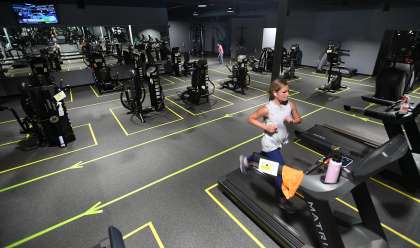
Now, gyms in the Bay Area and around the world have seen their doors shuttered by health orders. This month, 24 Hour Fitness filed for bankruptcy. And plans to reopen an industry that saw revenue of nearly $100 billion last year are teetering as surging infections cause authorities to rethink programs that would have included indoor workouts.
The sector’s recovery will probably demand a mix of high tech — smartphone apps and scheduling websites — and low tech — disinfectant wipes and painter’s tape. To satisfy health officials’ and consumers’ expectations of safety, some will have to switch to serving members outdoors or offsite. Heavy breathing and camaraderie may still be on offer — as long as there’s fresh air and lots of distance separating gym-goers.
For gym owners who were wrestling with attracting new customers and managing facilities before, it’s a whole new set of challenges.
“Ultimately, it is going to be about people who adapt. It’s about understanding the new normal and adjusting to assure that you can access physical health and mental well-being while minimizing risk,” Sonoma Fit CEO Adam Kovacs said. “I feel like I just ran a marathon, and now I have to climb Mount Everest.”
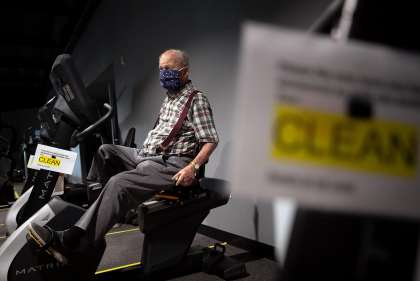
Procedures will differ between mega-chains — San Ramon’s 24 Hour Fitness has its own check-in app, for example — and small boutiques. And within the Bay Area, they’ll also vary county by county as local health officers make different decisions on what they will allow.
With two gyms that reopened last week in Sonoma and Petaluma and a third scheduled to reopen Monday in Novato, Kovacs is living the future of fitness. Drawn from his experiences and that of others, here’s a look at how going to the gym will work in the near future.
Scheduling
The days of dropping into a gym are a thing of the past. Most patrons will be asked to go online and schedule workout times to limit the number of people in a facility or a class and make it easier to maintain proper distance. Midday times may be slotted for vulnerable populations, when usage is lightest. Most of the apps and websites include self-checks that ask potential gym-goers about symptoms and possible infection crossover.
Check-in
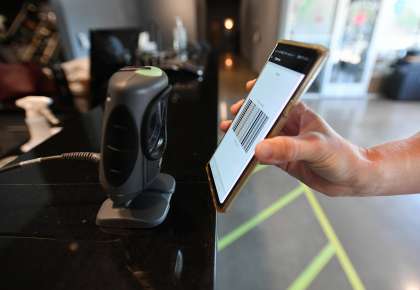
Forget sign-in sheets and shared pens. Even touchscreens are being junked. The arrival at a gym will now include forehead thermometers, contactless check-ins with bar codes from a scheduling app and lots of sanitation. Sonoma Fit requires handwashing outside before ever touching the entrance door handle and has another sanitation site set up in the foyer.
Clothing
Some gyms have taped off lockers to restrict usage, but the more prevalent scenario will be facilities that have completely shut down locker rooms, shower and laundry services. People will have to arrive ready to work out or be willing to leave their shoes outside and switch into gym-only sneakers that stay at the facility and are sanitized daily.
At the gym
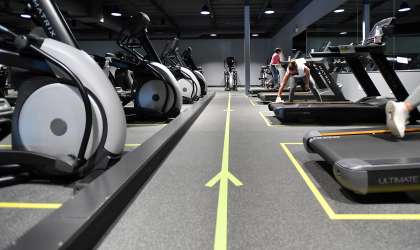
Instead of being closely supervised by trainers, gym-goers will follow the tape. Painter’s tape is being used to show the preferred walking directions within a gym and proper distancing for machines and equipment. Some gyms have gone as far as creating plastic bubbles for each piece of equipment, but the norm will be 6 to 8 feet of separation and consistently cleaned equipment. Even after exercisers wipe down used equipment, most gyms have set up on-demand cleaning systems alerting staffers that a disinfectant wipedown or electrostatic spray is required before anyone else can use the equipment. At Sonoma Fit, a button is pressed, a vibration buzzes on a staffer’s watch, and complete disinfection happens within seconds.
Behind the scenes
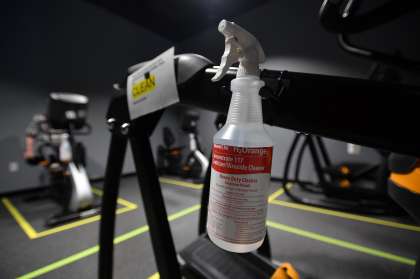
Masks and physical distancing are obvious, but there are also some hidden things designed to minimize risk. Most of the gyms will have HVAC ventilation systems intended to filter out bad air and exchange it with fresh air from outside. Some are experimenting with UV-C light and HEPA filter fans.
Outdoors
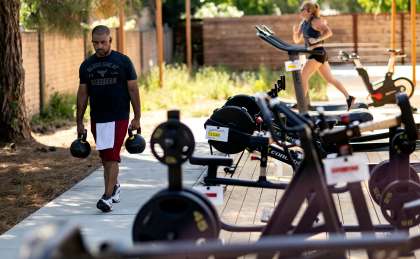
Those who can’t reserve space or aren’t comfortable risking a gym environment might train outside or virtually. There is a huge rise in outdoor boot camps, remote or video training and at-home exercise. Nearly every gym has swung toward virtual training, and some have been able to add outdoor space. Sonoma Fit added 7,000 square feet outdoors to an 18,000-square-foot indoor venue.
“We have watched the news for the past three months and talked to every health expert available, and even though some are filled with fear, it is also obvious that a healthy body is the best weapon against COVID-19,” Kovacs said. “I have been fighting all my life, and I will make sure the members of my gym can join me in this fight in the safest way possible.”
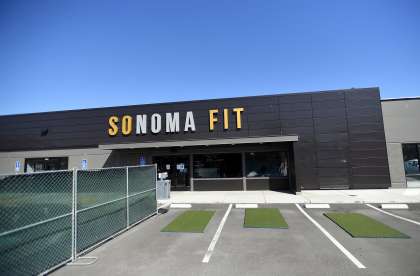
Rusty Simmons is a San Francisco Chronicle staff writer. Email: rsimmons@sfchronicle.com Twitter: @Rusty_SFChron

